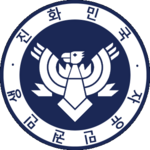Education in Zhenia
| Ministry of Education, Science and Technology | |
|---|---|
| National education budget (2019) | |
| Budget | ₩54.7 billion |
| General details | |
| Primary languages | Zhenian |
| System type | National |
| Literacy (2019) | |
| Total | 99.9% |
| Male | 99.8% |
| Female | 99.9% |
| Enrollment | |
| Total | Not available |
| Primary | 100% |
| Secondary | 100% |
| Attainment | |
| Post-secondary diploma | 47.7% |
Education in Zhenia is universal and mandatory managed by the Ministry of Education and, in terms of selecting members of government and partially the higher levels of education, the Jungchuwon. The scope of education in Zhenia includes mandatory schooling and the primary and secondary levels of education, professional and tertiary education, technical institutes and academic research. The Constitution states that all Zhenian citizens and residents of appropriate age must undergo a total of 12 years of mandatory primary and secondary education, while further legislation makes the failure to enroll Zhenian citizens and residents of appropriate age into the education system a criminal offense, with the exception of some homeschooling in "inevitable circumstances". Excluding such cases, mandatory primary and secondary education in Zhenia is done through both public and private schools, both of which receive varying levels of government funding.
Regardless of ethnicity, Zhenian is the primary language in the education system nationwide since the Empire of Zhenia; however, a selected number of government-approved International Schooling Institutes (ISI), although they are institutions mostly for foreigners and foreign-born residents, can select a language other than Zhenian upon which the curriculum would be laid out. Other languages in use by ethnic minorities, including Haedongese, Yemegese and Balakhaat, are taught as second or third languages, mostly in the secondary level of education. Jinmun remains the primary script used in the nation's education system as a whole, although Seomun, the classic Zhenian script, is taught alongside the curriculum towards the end of primary education.
Structured around meritocratic principles of "allowing one's set of options proportionate to his merits", the Zhenian education system is mostly centered around increasing the academic and vocational capacity of the student; this, coupled with the militant social drive for ascendancy via education, has resulted in a society-wide feverish drive and fierce competition for the most selective institutions in the nation, also known as "Zhenian fever" coined by international media. While it has been one of the leading factors that has resulted in Zhenia becoming one of the top-performing nations in the world academically, the Zhenian education system has also been criticized in recent years due to its extensive use of standardized testing hindering creativity and critical thinking on the educational curriculum, as well as the educational pressure and competition to enter the most selective institutions in the nation that has brought about social problems.
History
School Grades
In preliminary, primary and secondary levels of education, school years in Zhenia consist of three trimesters, with the first one running from mid-January to mid-April, the second one running from mid-April to late July, and the third one running from late August to mid-December. School levels are mostly divided by age brackets, with each grade corresponding to an age bracket. Each school level after primary school is separated by the Academic Aptitude Test (Zhenian: 학문적성평가), the scores of which are factored into the student's future choices for the schools in the succeeding level.
| Level/Grade | Typical age |
|---|---|
| Infant School | |
| Nursery School | 1–4 |
| Kindergarten | 4–6 |
| Primary School | |
| 1st Grade | 6-7 |
| 2nd Grade | 7-8 |
| 3rd Grade | 8-9 |
| 4th Grade | 9-10 |
| 5th Grade | 10-11 |
| 6th Grade | 11-12 |
| Intermediate School (Academic, Technical, Special, Autonomous) | |
| 7th Grade | 12-13 |
| 8th Grade | 13-14 |
| 9th Grade | 14-15 |
| High School (Academic, Technical, Special, Autonomous) | |
| 10th Grade | 15-16 |
| 11th Grade | 16-17 |
| 12th Grade | 17-18 |
| Post-secondary education | |
| Tertiary education (College or University) | Ages vary (usually four years) |
Preliminary Education
Primary Education
Secondary Education
Secondary education in Zhenia primary consists of two levels of schools - intermediate and high schools. It is during the secondary school years in which students enter separated education tracks depending on their academic and technical merits: they are placed in different educational tracks - Academic, Technical, Special and Autonomous - primarily according to their grades in the fifth and sixth grades, as well as their AAT-I results.
"Academic" secondary schools are among the most common of secondary schools, with its curriculum primarily consisting of various academic subjects in preparation for the AAT-II exam at the end of the ninth grade.
